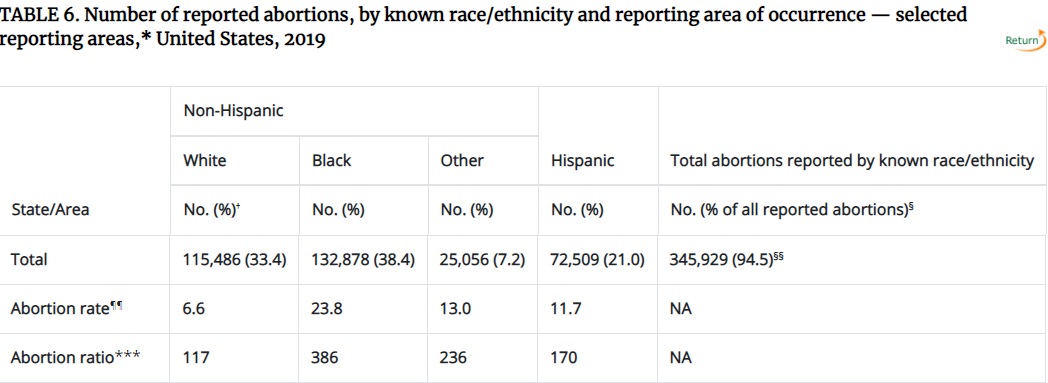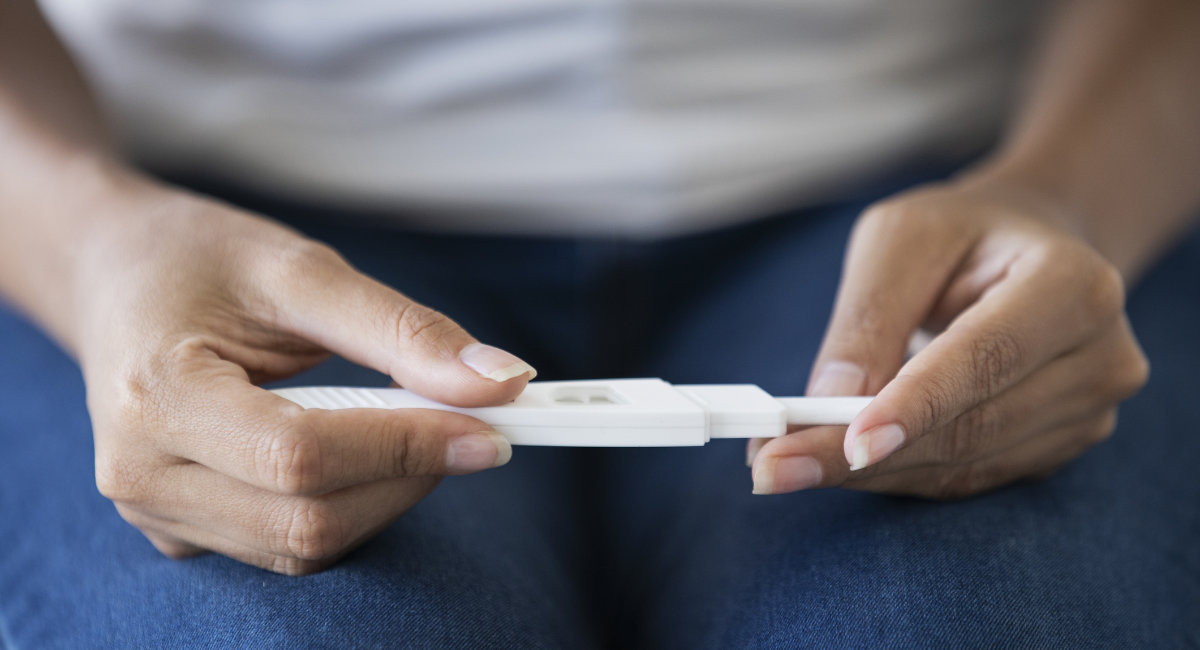Abortion numbers have continued a slight upward trend in 2019 according to the latest data published from the Centers for Disease Control (CDC). The CDC recorded 629,898 abortions from 49 states, which voluntarily reported these numbers on April 9, 2021. The 2019 numbers indicate a slight increase of 1.7% from the 619,591 abortions recorded in 2018.
However, the 2019 numbers are still a decrease of 1.3% from the 638,169 abortions recorded in 2015, and nearly 18% lower than what was recorded in 2010 (765,751). These abortion numbers also remain drastically lower (by nearly 56%) than their highest peak of 1,429,247 abortions reported in 1990.
While recent abortion numbers recorded by the CDC have remained closer to those recorded in 1973 (615,831), the latest data for 2019 represents additional lives lost to the violence of abortion. To date, CDC reports that approximately 18% of all pregnancies in the United States end in induced abortion.
According to a tweet published by Dr. Michael New, “Overall the number of abortions increased in 24 of 47 states.”
Data
The 2019 report included state data from 49 reporting areas (47 states, the District of Columbia, and New York City, excluding California, Maryland, and New Hampshire). However, according to the CDC, “Because the reporting of abortion data to CDC is voluntary, many reporting areas have developed their own data collection forms and might not collect or provide all the information requested by CDC. As a result, the level of detail reported by CDC on the characteristics of women obtaining abortions might vary from year to year and by reporting area.”
Rate and Ratio
The CDC calculated the abortion rate and ratio using data from 48 reporting areas which provided data every year from 2010–2019. This reflects 625,346 (99.3%) of abortions recorded by the CDC in 2019.
In 2019, the CDC recorded an abortion rate of 11.4 abortions per 1,000 women aged 15–44 years, and an abortion ratio (number of abortions per 1,000 live births) of 195 abortions from these continuously recorded areas. From 2018 to 2019 the abortion rate increased 0.9% (from 11.3 abortions per 1,000 women aged 15–44 years) and the abortion ratio increased 3% (from 189 abortions per 1,000 live births).
However, the CDC notes that from 2010 to 2019, the abortion rate decreased 21% (from 14.4 abortions per 1,000 women aged 15–44 years), and the abortion ratio decreased 13% (from 225 abortions per 1,000 live births).
The good news is that in 2019, the abortion rate still showed a decline of nearly 53% from where it was in 1990 (24 v. 11.4), and a decrease of nearly 19% since 1973 (14 v. 11.4).
“Pro-lifers have still made long term progress,” Dr. New tweeted. “According to Guttmacher, the abortion rate has declined by over 50% since 1980.”
Abortion related deaths
The CDC has not published abortion-related deaths for 2019 but did identify two deaths for 2018.
An abortion-related death is defined as “a death resulting from a direct complication of an abortion (legal or illegal), an indirect complication caused by a chain of events initiated by an abortion, or an aggravation of a preexisting condition by the physiologic or psychologic effects of abortion.”
According to the CDC, between 1998 and 2018, eight reporting areas did not report abortion data on a yearly basis.
Abortion characteristics by age
Among the 49 areas that reported abortion numbers by women’s age for 2019, the CDC reported that women in their 20s accounted for the highest percentage of abortions (56.9%) and had the highest abortion rates (37.6 abortions per 1,000 women).
In contrast, while adolescents less than 15 years old made up just 0.2% of the overall abortion percentage, they accounted for the highest abortion ratio (873 abortions per 1,000 live births). In addition, according to the CDC, 85.5% of women or teens who had an abortion in 2019 were unmarried.
Abortion percentages by age:
- Teens <15 years – 0.2%
- Teens aged 15-19 – 8.6%
- Women aged 20–24 years- 27.6%
- Women aged 25–29 years – 29.3%
- Women aged 30-34 years – 19.6%
- Women aged 35-39 years – 11%
- Women ≥40 years – 3.7%
This seems to line up with previous data from the Guttmacher Institute which reported that in 2014, more than half of all U.S. abortion patients — 60% — were in their 20s while 25% were in their 30s.

CDC 2019 abortion stats characteristics of women by age
Previous live births
In 2019, 45 areas reported numbers related to previous live births as follows:
- 40.2% of women had zero
- 24.5% of women had one
- 20.0% of women had two
- 9.2% of women had three
- 6.0% of women had four or more previous live births
In 2014, data from the Guttmacher Institute, which gathers more comprehensive abortion data than the CDC, indicated that 59% of women obtaining abortions had previously had a live birth.
However, Live Action News previously reviewed a study which analyzed a population approximately 583 times larger than the sample used by Guttmacher, which found that abortion among mothers, at least those with low incomes, is “exceedingly uncommon, if not rare.”
Previous abortions
Previous abortion data was compiled by 44 areas for 2019 where the CDC found that “the majority of women (58.2%) had previously had no abortions, 23.8% had previously had one abortion, 10.5% had previously had two abortions, and 7.5% had previously had three or more abortions,” the CDC wrote.
CDC data seems to conflict with previous data published by the Guttmacher Institute, which indicated that half of women obtaining abortions had previously had an abortion. Guttmacher has not yet published any data for 2018 or 2019.
A 2020 study published in the Journal of Health Services Research and Managerial Epidemiology found that aborting a first child makes a woman more likely to abort in future pregnancies.
Abortion by race/ethnicity
“Non-Hispanic White women had the lowest abortion rate (6.6 abortions per 1,000 women) and ratio (117 abortions per 1,000 live births), and non-Hispanic Black women had the highest abortion rate (23.8 abortions per 1,000 women) and ratio (386 abortions per 1,000 live births),” the CDC report states.
Using the percentages from the 30 areas that reported abortion data by race or ethnicity in 2019, against the total of 629,898 abortions reported to the CDC for 2019, Live Action News estimates the following:
- White women: (33.4%) 210,386 estimated abortions
- Black women: (38.4%) 241,880 estimated abortions
- Hispanic women: (21.0%) 132,279 estimated abortions
- Non-Hispanic women in the other race category: (7.2%) 45,353 estimated abortions
Live Action News plans to publish a more comprehensive analysis for this category in the coming days.

CDC 2019 abortion data by race and ethnicity
Gestation
In 2019, nearly 6,300 babies were aborted at or past 21 weeks gestation in just 43 reporting areas. (Babies have survived when born prematurely as early as 21 weeks.)
Live Action News used the CDC’s abortion percentages for the 43 reporting areas against the total of 629,898 reported in 2019 to calculate the following estimates of abortion by gestational age:
- 9 weeks or less: (79.3%) – 499,509 estimated
- 13 weeks or less: (92.7%) – 583,915 estimated
- 14-20 weeks: (6.2%) –39,054 estimated
- 21 weeks or greater: (1.0%) –6,299 estimated
Note: There is no federal requirement to report abortions, and no requirement to report abortions by gestation.
Between 2018 (77.7%) and 2019 (79.3%), the percentage of abortions committed at nine weeks gestation or less slightly increased while abortions at 13 weeks gestation or less remained relatively the same. Abortions 14-20 weeks dropped slightly from 6.9% in 2018 to 6.2% in 2019, while those recorded at 21 weeks or greater remained the same at 1%.
Why the increase?
“The data CDC compiles are limited and do not include information on the reasons for abortion or availability of abortion services, and the completeness of abortion data in reporting areas can vary from year to year,” the agency said in an email to The Washington Times. The CDC said “it is not clear if this represents an upward trend” after two years of slight increases, and “continued surveillance is needed” to determine the reason for the shift because the data is “difficult to interpret.”
According to Dr. Michael New, “Public policy plays a key role” in abortion numbers. “In 2018, West Virginia voted to quit funding abortions through their Medicaid program. Abortions fell 21%,” he wrote. He also pointed out, “In 2017, Illinois started funding abortions through Medicaid. For the 2nd year in a row, abortions increased by more than 9% in Illinois.”
He wrote, “The main story with this new abortion data is the increase in chemical abortions. The number of chemical abortions increased by 12.5% between 2018 and 2019! 43.7% of all abortions in the U.S. are chemical abortions.”
The CDC acknowledged that pro-life laws do impact abortion, writing, “Multiple factors influence the incidence of abortion, including access to health care services and contraception; the availability of abortion providers; state regulations, such as mandatory waiting periods, parental involvement laws, legal restrictions on abortion providers and changes in the economy,” among others.
Editor’s Note, 1/12/22: Updated with a quote regarding the CDC from the Washington Times.
“Like” Live Action News on Facebook for more pro-life news and commentary!







